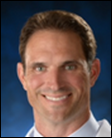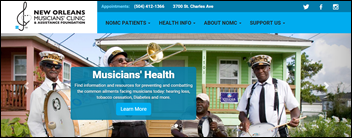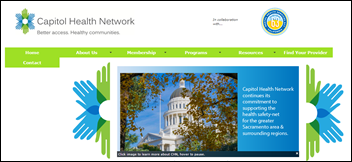News 9/1/15
Top News

In light of the continued absence of a final Meaningful Use rule from CMS (not to mention a need to drum up discussion topics in time for its conference next month) MGMA calls on the agency to extend the reporting period for medical groups into 2016, and to move to a 90-day reporting period thereafter. For those still keeping track, CMS issued its proposed final rule back in April. (I’m currently taking bets CMS will publish the final rule at 5 pm ET this Friday as everyone heads off for the long Labor Day weekend.) In making the announcement, MGMA President and CEO Halee Fischer-Wright, MD emphasized what physicians and vendors alike have been grumbling about for months: “Without having a definitive set of program measures, and sufficient time to incorporate them into EHR software and practice workflow, medical groups simply cannot responsibly transition to the modified Stage 2 requirements without a massive drop-off in participation. Providing this flexibility will permit groups additional time to upgrade their EHRs to the revised Stage 2 specifications and test these systems to ensure that they are able to conform to program requirements while meeting the practical needs of clinicians and their patients. An extension of the 2015 reporting year is absolutely vital to continued program success.”
HIStalk Practice Announcements and Requests

I don’t typically give much thought to my home office aside from being grateful that I don’t have to spend an obscene amount of time in traffic twice a day. This article, however, has prompted me to reconsider the space I spend so much time in. I do have a shed out back that could easily be converted into a small but chic workspace. Perhaps I should go the “She Shed” route. I’d love to hear how HIStalk Practice readers have jazzed up their home office spaces. Inspire me with your ideas and pictures.
I suppose I should also be grateful that I don’t have to worry about co-working thieves stealing my lunch from a communal kitchen. Jars of Nutella are apparently such a hot commodity that German furniture designer Daniel Schobloch invented a lock to keep thieving hands away and self-control in place (at least for the amount of time it takes to find the key). “[T]he idea started out as a joke,” he says. “One of my friends was always getting worked up because his children were stealing his Nutella.” Schobloch’s funny idea has turned into a sold-out line available for pre-order on Ebay for about $11.
Webinars
September 9 (Wednesday) 2:00 ET. “Need to cleanse, unify and manage the provider data in your EMR master file and other IT systems?” Phynd’s Unified Provider Management platform allows healthcare organizations to maintain a single, verified, customized profile for each provider across legacy IT systems. This 30-minute presentation will explain how Phynd’s system can help synchronize internal provider information in real time; create provider interoperability among systems; and manage, update, and analyze provider information with workflow tools to improve revenue cycle and clinical communication.
Previous webinars are on the YouTube channel. Contact Lorre for webinar services including discounts for signing up by Labor Day.
Acquisitions, Funding, Business, and Stock
![]()
Cary, NC-based Medfusion, which launched patient payment and RCM tools in July, announces a $3 million investment from Bull City Venture Partners and Hatteras Venture Partners. John Crumpler, general partner at Hatteras, and David Jones, general partner at Bull City, will join the Medfusion board.

Medical dictation startup Skywriter MD looks to raise $1.5 million as part of a $2 million round it will use to fund a planned expansion this December. The company, which currently employs 34 including 20 scribes, optimistically plans to hire up to 35 scribes per month for the next several years if financing falls into place.
Announcements and Implementations
![]()
IDC names RelayHealth a leader in clinical data exchange in its latest MarketScape report. The company, which manages 2.8 billion transactions annually, was tapped by CommonWell earlier this year to manage its data access services, record locator, and identity and consent management.

ITelagen launches a series of PainCare templates for use with pain-management specialty EHRs or as a stand-alone application.
Security and privacy compliance software vendor HIPAA One joins Athenahealth’s More Disruption Please Marketplace.
People

Patrick Everett (ProStat Anesthesia Advisors) joins Zotec Partners to assist with business development of its anesthesiology division.

Askesis Development Group promotes Neal Ryan, MD from board member to president.
Telemedicine
Over 20 Minnesota lawmakers write to members of Congress urging them to pass legislation that would expand Medicare coverage to include telemedicine services. Co-author Rep. Joe Schomacker was instrumental in passing legislation earlier this year requiring Minnesota’s private payers to reimburse providers for care via telemedicine.

In related news, Blue Cross and Blue Shield of Minnesota selects Doctor on Demand as its preferred telemedicine provider beginning in 2016. BCBS is the largest private payer in the state, giving Doctor on Demand a distinct advantage over its CVS Health partners, Teladoc and American Well.
Research and Innovation

Navicure releases the results of its fourth ICD-10 readiness survey, noting that a greater percentage of practice administrators and billing managers are prepared for ICD-10 than the last time the survey was conducted. The majority this time around are still optimistic they’ll be ready by October 1, yet 57 percent believe they aren’t on track with preparations for the transition. Though contradictory, the findings line up with the fact that 35 percent of respondents didn’t participate in end-to-end testing. Seems to me like unprepared physician practices are relying on sheer optimism to see them through the switch.
Other

On an ICD-10 side note, a friend tells me AHIMA, taking place September 26-30 in New Orleans, will likely be a ghost town this year thanks to the October 1 deadline. She’s says it’s a safe bet that most providers and many vendors will skip the show to hunker down and prepare for the 1st. I assume any providers that do attend work for organizations that have had their ducks in a row for quite awhile. I’d love reader commentary and pictures proving or disproving her theory.

Mayo Clinic (MN) and Hootsuite partner to offer medial professionals social media training and certification. No doubt it’s a timely move for EPs given how much I’ve seen “Why Your Doctor Won’t Friend You on Facebook” circulating over the last two weeks. I believe that the average independent PCP will likely see little value. (I’d love to know how much the course costs, but the link to registration details is dead.) I imagine they’re too busy preparing for ICD-10 and making assumptions about the Meaningful Use schedule to set aside time for a course on how to tweet in a HIPAA-friendly manner. Feel free to chime in via the comments below on the value your practice or group derives from social networking, and whether you’d benefit from formal training.
Contacts
Jennifer, Mr. H, Lorre, Dr. Jayne, Dr. Gregg, Lt. Dan
More news: HIStalk, HIStalk Connect.
Get HIStalk Practice updates.
Contact us online.
Become a sponsor.





































The article about Pediatric Associates in CA has a nugget with a potentially outsized impact: the implication that VFC vaccines…